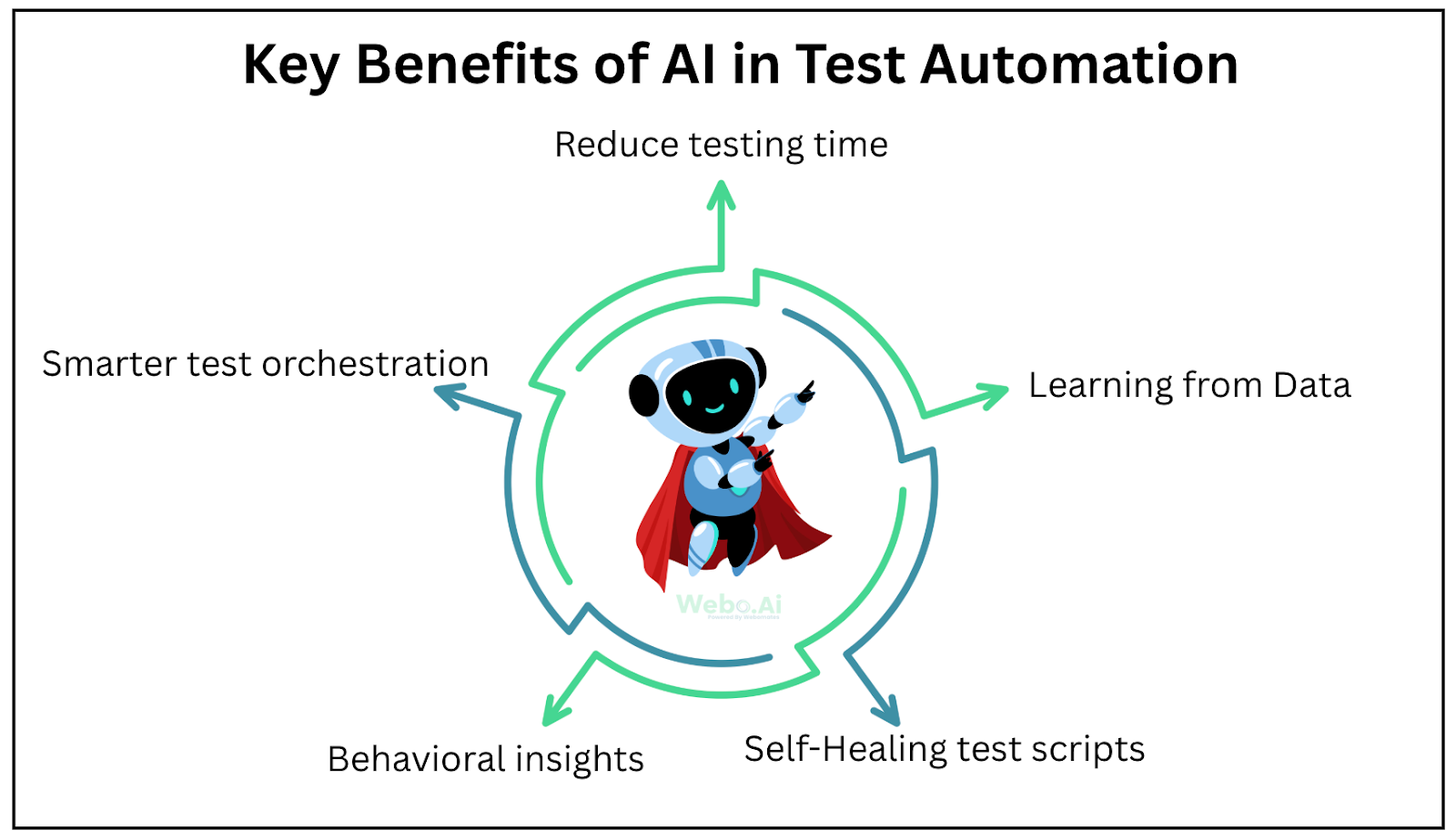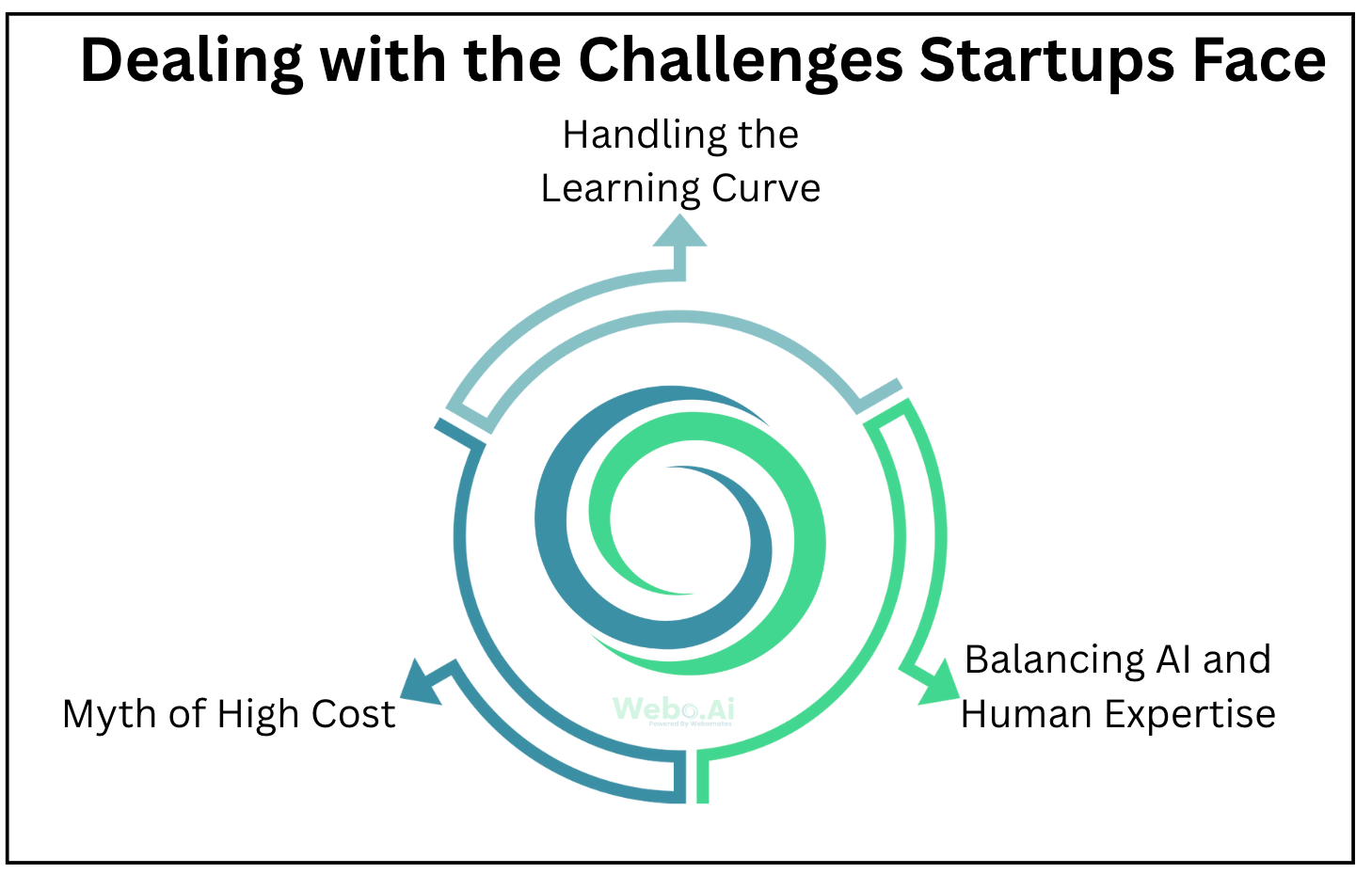Why Fast-Moving Startups Are Turning to AI for Better Testing?

Published on April 21, 2024
Introduction
Startups run on determination; they thrive under just the right amount of pressure and of course, lots of caffeine to keep the momentum going. Conceptualization is one thing, but the materialization and successful execution of ideas is what keeps the lights on. Rolling out a feature when you are under a great deal of scrutiny from your investors, end users, and your team can give sleepless nights to your team.
What are the challenges Startups face?
Small teams, limited time, shoestring budgets. That’s the startup reality. You’re trying to get a product out the door, gather user feedback, iterate, and stay ahead of competitors who might launch tomorrow. Every engineer is wearing five hats, and there's barely time to test, let alone build a robust QA pipeline.
Limited Resources and Time Constraints
In a startup, time is your biggest enemy. Your runway is finite, and every week spent bug-fixing is a week not spent growing. Hiring a full QA team isn’t feasible early on. Manual testing doesn't scale, and automated testing often gets delayed because writing and maintaining test scripts feels like a luxury. So you cut corners.
Speed vs. Quality: Finding the Balance
Move fast, break things. It sounds bold until broken things drive users away. Many startups lean on speed, thinking they’ll fix bugs later. But later rarely comes, and what builds up is technical debt and frustrated users. What started as a clever workaround becomes a reputation problem.
Lack of Testing Processes
Most early-stage startups don't have clear testing processes. Testing happens ad hoc, inconsistently, and often right before a release. Bugs slip through. Developers test their own code, which creates blind spots. And without structured feedback, recurring issues stay unresolved.
Key Benefits of AI in Test Automation
This is where AI comes in. It’s not just about saving time, though it does that too. AI test automation can lift the testing burden without the overhead of traditional QA setups. But the benefits go even deeper than that.

Reduced Testing Time, Improved Accuracy
AI-driven tools cut down manual work. They can run hundreds of tests in parallel, find patterns that
humans miss, and highlight high-risk areas in your codebase. It’s faster, more consistent, and less
prone to human error.
They also enable smarter test execution. Instead of blindly running every
test, AI can prioritize tests that are most likely to fail based on past patterns, recent changes in
the codebase, or risk indicators. This shortens cycles and ensures your team is spending time where
it matters.
Learning from Data
AI thrives on data. Every test run becomes a lesson. Over time, it gets better at predicting where
bugs might pop up and which tests actually matter. It fine-tunes test selection, reduces redundancy,
and uncovers trends that manual approaches overlook.
AI can also analyze logs, historical failures, and integration results to preemptively catch issues
before they snowball. The more you use it, the smarter it gets, creating a feedback loop that
consistently sharpens your quality assurance.
Self-Healing Test Scripts
A major pain in automation is maintaining scripts as your product evolves. AI can auto-correct or "self-heal" broken tests when minor UI changes or backend tweaks happen. This removes the constant upkeep and allows teams to stay focused on building features.
Behavioral Insights
Beyond pass/fail metrics, AI can interpret user flows and behavioral patterns to simulate real-world use cases. It doesn’t just test what’s coded- it helps ensure what’s tested aligns with how users actually interact with your app.
Smarter Test Orchestration
AI tools can determine optimal test environments, time slots, and configurations for running tests- balancing resources and prioritizing high-value areas. This means more efficient test runs and fewer bottlenecks in CI/CD pipelines.
Why AI Test Automation Works for Startups
What startups need is speed, agility, and efficiency. AI test automation delivers all three.

Accelerating Test Cycles
When code changes constantly, tests need to keep up. AI handles repetitive test cases,regression testing , and even exploratory testing . With AI, you can test early and often without slowing down your team.
Improving Test Coverage
Startups often don’t know what they’re missing until users report it. AI can flag untested paths, simulate complex user behaviors, and ensure that edge cases are covered. It gives your product a safety net you didn’t know you needed.
Resource Optimization
Hiring a QA team takes time and money you don’t have. With AI, you don’t need an army of testers. A lean team can manage a robust testing setup, freeing engineers to focus on what they do best- building.
Real-Time Feedback
AI platforms like Webo.Ai provide real-time insights. You don’t wait hours for a test report. If something breaks, you know immediately. That short feedback loop helps you fix issues before they pile up.
Enhanced Scalability
As your product grows, so does the complexity. More users, more features, more potential bugs. AI scales with you. It doesn’t get overwhelmed by size or scope, and it doesn’t require constant babysitting.
Dealing with the Challenges Startups Face in Implementing AI Test Automation
Adopting AI test automation isn’t frictionless. But neither is releasing buggy software and losing users.

Handling the Learning Curve
Yes, there’s a learning curve. But like any solid investment, the upfront cost pays off. Start small. Run a pilot. Train your developers to work with AI-powered tools. Integrate it into your CI/CD pipeline. Use it for regression tests first. Then expand.
Balancing AI and Human Expertise
AI isn’t here to replace human testers. It’s here to amplify them. Humans bring context, creativity, and intuition- things AI lacks. But AI brings speed, scale, and consistency. Use both. Keep oversight in the loop. Let AI handle the heavy lifting, and let humans focus on strategic testing.
Myth of High Cost
One of the biggest misconceptions is that AI-driven testing is too expensive for startups. While the initial setup might seem high, the total cost of ownership is significantly lower in the long run. You save on manual hours, reduce bug-related rework, and avoid costly production issues.
According toa Fortune Business
Insights
, the AI-enabled testing market is projected to grow to $1.68
billion by 2030. That kind of growth doesn’t happen without a reason. Companies are investing
because the return is real- and startups stand to gain the most from early adoption.
When you
factor in time saved, fewer bugs in production, and faster release cycles, AI becomes one of the
most cost-effective investments a startup can make.
Why Is AI the Ultimate Solution for Startup Testing Challenges?
Startups that care about quality but can’t afford traditional QA setups need to think differently. AI-driven test automation offers a clear way forward. It gives you coverage, speed, and cost-efficiency. It grows with you. It learns as you go.
You don’t need to choose between moving fast and building well. With the right tools, you can do both.
That’s exactly why Webo.Ai was built. We designed this platform with startups in mind. Our tools don’t assume you have a dedicated QA team or months to implement a system. Webo.Ai integrates easily, scales naturally, and delivers results that matter to small teams shipping fast.
Still unsure? Start with a free trial and see how quickly you can improve your testing workflow. Or, if you're hesitant to commit, try oura Sandbox environment- it's preloaded with an application so you can explore Webo.Ai's full capabilities without setting anything up. Just register on our CQ portal and access Sandbox.
If you're building something that matters, don’t let bugs hold you back. Give your team the edge they need.
Try Webo.Ai today and see how AI-driven testing can keep your quality high and your speed intact.
